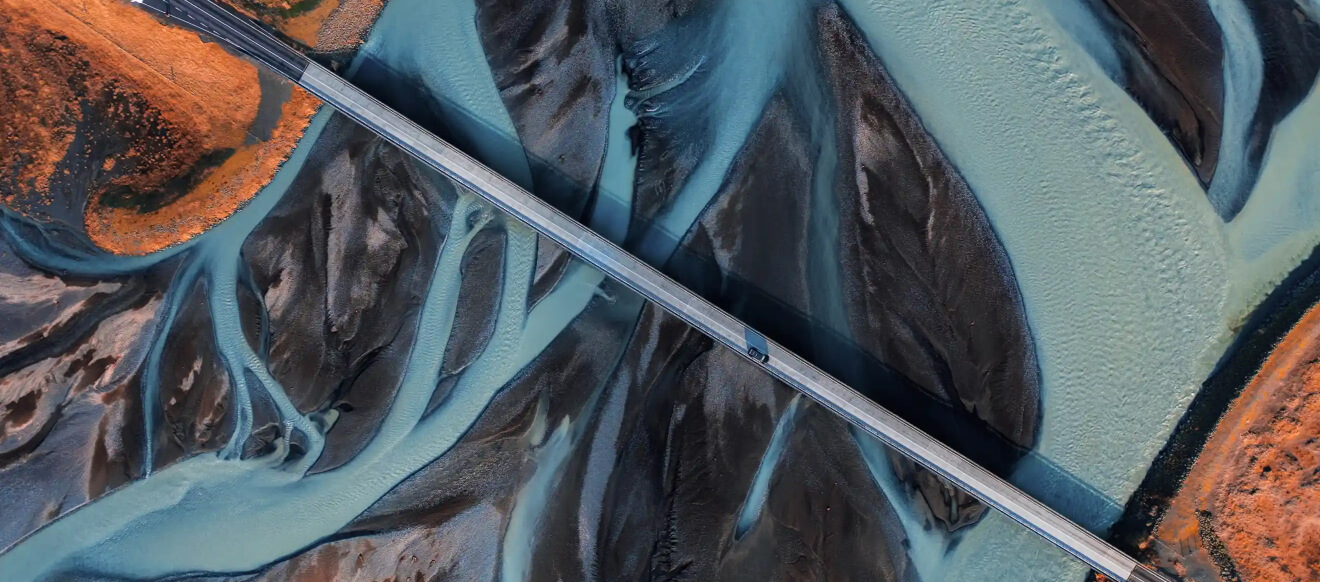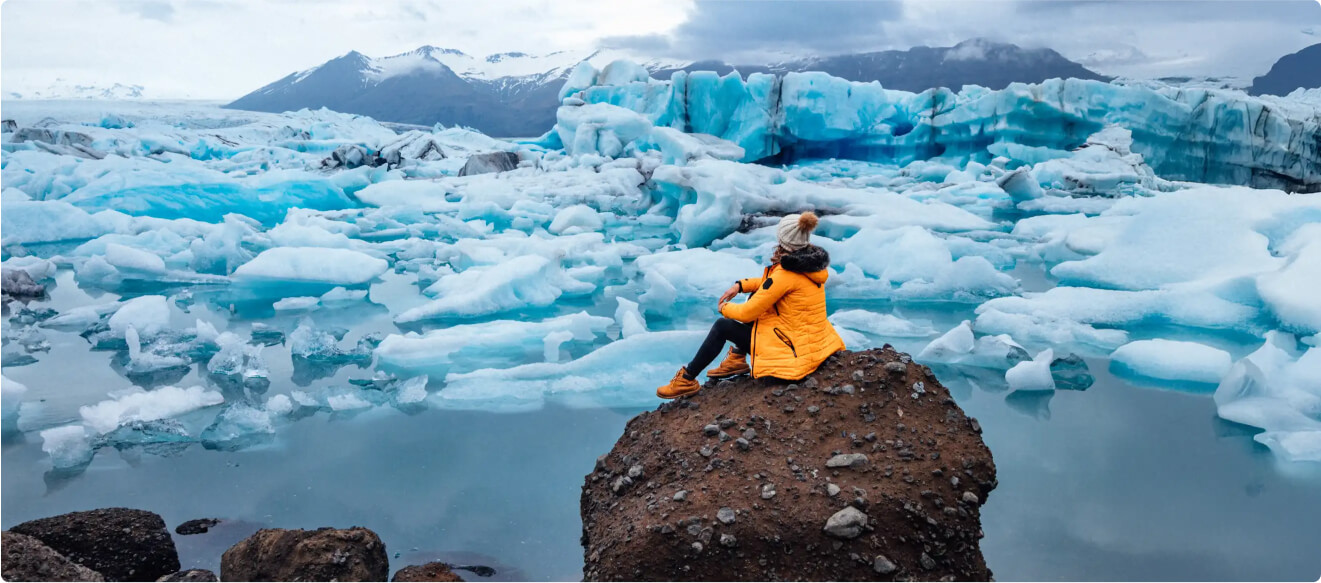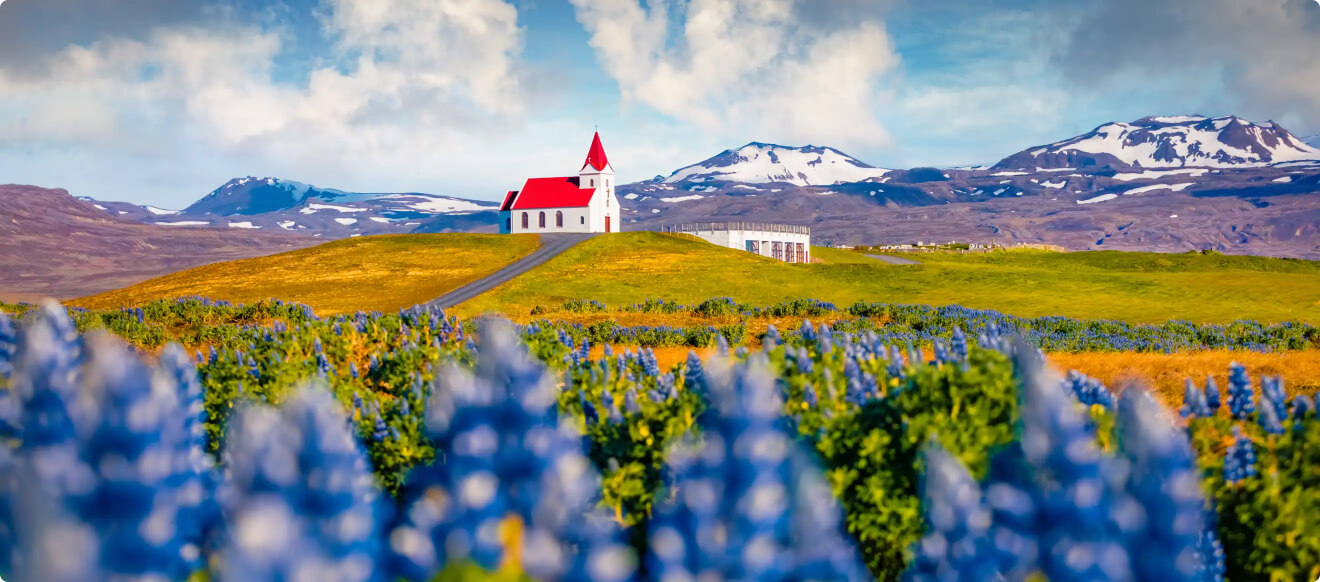The Iceland weather is a force of nature that you won’t have the chance to encounter in many other places. We give you a monthly and seasonal breakdown, so you can plan your trip accordingly.
Regardless of which season you want to visit Iceland in, you are sure to catch some proper winds. Iceland weather is half the adventure for outdoor activities, and often adds to the cozy factor whenever you are relaxing indoors, which makes this the perfect destination for any type of holiday (except a tropical one).
What is the Weather Like in Iceland
It is incredibly unpredictable and can easily go from a calm sunny day to a raging storm that makes you wonder if the entire house is going to blow away. This is due to the Iceland climate and can vary greatly depending on where you are in the country. Most of the time, though, the Iceland weather year-round will be a little cold, likely windy and with plenty of clouds.
The Weather in Reykjavik
Arriving in Iceland, Reykjavik is the first stop you’ll make after the airport and the base of operations for your adventures. Reykjavik is a coastal city and the weather acts accordingly. You often have a wind blowing through the streets (often light), and the temperatures are quite mild.
The Weather in North Iceland
As you might think, the northern temperature in Iceland is quite cold compared to the other parts of the country. Visiting the north in the summer can even be fairly cold, and you should remember to pack warm clothing if you go here, regardless of the season.
The Weather in East Iceland
East Iceland is perfect if you want to experience beautiful nature without being bothered by other tourists. It’s a scarcely dense part of the country and can offer you the full range of the Iceland weather and temperature spectrum. Sometimes every type of weather in a single day!
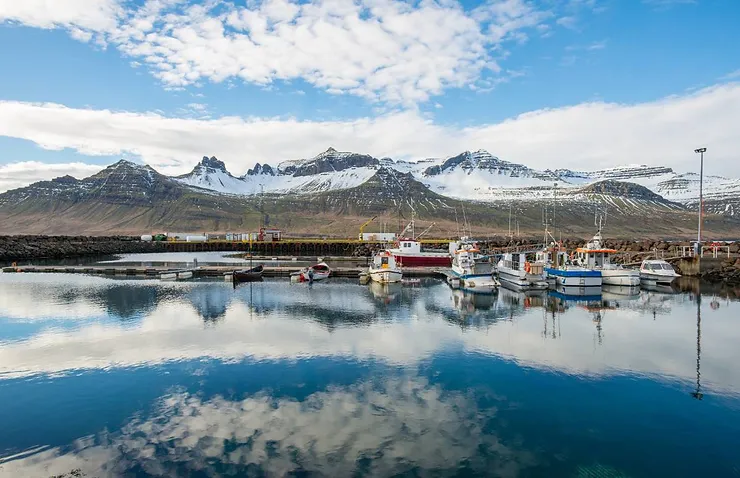
The Weather in South Iceland
Being the most tourist dense part of the island, the Iceland weather in the southern parts is usually regarded as mild and easy-going compared to the rest of the country. You can get the bulk of experiences in this part of Iceland, and this is where you should look for the best deal to rent a luxury car Iceland has to offer.
The Weather in West Iceland
The wind blows hard in the west. The Iceland climate is governed by the warmth from the core of the island clashing with the arctic cold of the sea. This results in heavy winds, rain, and snow all year, and the temperatures reflect this type of Iceland weather quite well.
Iceland Weather and Temperatures by Month
Knowing the weather in the various parts of the country, let’s have a look at the overall Iceland weather year-round.
|
Month |
Avg High temperature |
Avg Low temperature |
Avg Rainfall |
Avg Sunlight |
|
January |
2°C |
-2°C |
100mm |
5 hours |
|
February |
2°C |
-2°C |
107,5mm |
8 hours |
|
March |
3°C |
-1°C |
92,5mm |
12 hours |
|
April |
6°C |
1°C |
72,5mm |
16 hours |
|
May |
9°C |
4°C |
57,5mm |
18 hours |
|
June |
12°C |
8°C |
52,5mm |
21 hours |
|
July |
14°C |
9°C |
67,5mm |
19 hours |
|
August |
13°C |
8°C |
87,5mm |
16 hours |
|
September |
10°C |
6°C |
115mm |
13 hours |
|
October |
7°C |
2°C |
112,5mm |
9 hours |
|
November |
4°C |
-1°C |
105mm |
6 hours |
|
December |
2°C |
-2°C |
102,5mm |
4 hours |
Source: https://www.tripsavvy.com/average-weather-in-iceland-by-season-4157755
Iceland Weather and Temperatures in January
The weather in Iceland in January is in the middle of winter, just before the strong winds and rain is setting in. Make sure to keep an eye on the weather forecast, since the weather can go from very sunny and seemingly warm to biting cold and blow-you-away-windy.
In January, it’s also a good idea to come prepared with some sunscreen (believe it or not), since the snow reflects the sun’s rays and you can actually get a sunburn when you’re out hiking in the snow.
Iceland Weather in January in a nutshell:
-
Average high temperature: 2°C
-
Average low temperature: -2°C
-
Average rainfall: 100mm
-
Average sunlight: 5 hours
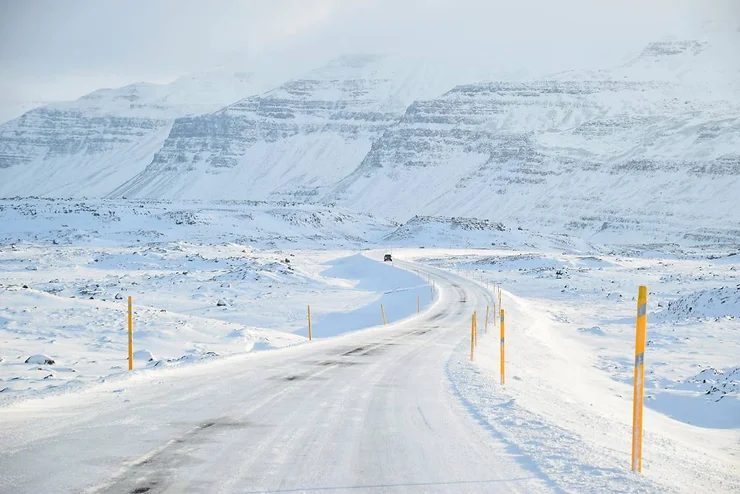
Iceland Weather and Temperatures in February
At the beginning of the hectic weather in Iceland in February, things can still be a bit calm and perfect if you intend to ski in Iceland. Pack a sturdy pair of sunglasses, rent your ski equipment, and hit the slopes.
As you get closer to the end of February, the Iceland weather often goes full-blown, uhm, blowing. The wind picks up and the rain-mixed snow starts to set in for real, which makes this the perfect time of year to submerge yourself in the hot springs at some shielded location.
Iceland Weather in February in a nutshell:
-
Average high temperature: 2°C
-
Average low temperature: -2°C
-
Average rainfall: 107,5mm
-
Average sunlight: 8 hours
Iceland Weather and Temperatures in March
Marking the official end of the season for spotting the northern lights, March is ending the winter and marching (couldn’t resist) Iceland into the spring. Temperatures are starting to steadily go up, and you can start to expect the days to be longer than the nights.
The weather in Iceland in March reflects the dying breath of the winter, so you can expect plenty of rain and wind. The winter snow is starting to melt at the end of March, so hiking is generally not a great option.
Iceland Weather in March in a nutshell:
-
Average high temperature: 3°C
-
Average low temperature: -1°C
-
Average rainfall: 92,5mm
-
Average sunlight: 12 hours
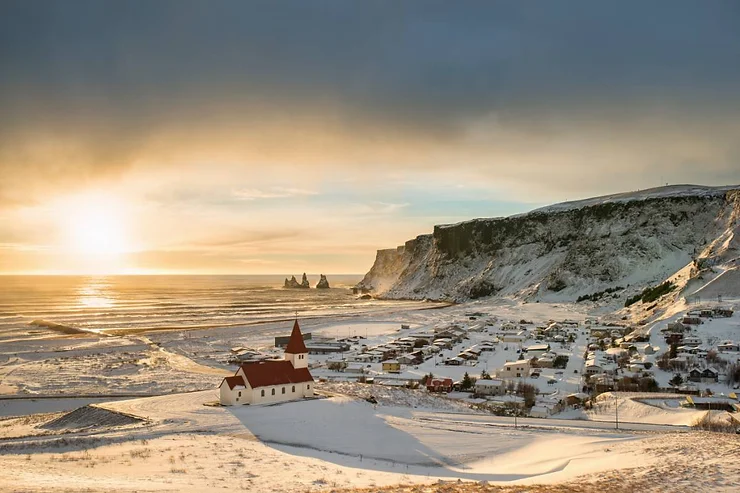
Iceland Weather and Temperatures in April
As the official start of the spring in Iceland, this month has a lot to offer. The temperature in Iceland is now steadily above 0°C and you can feel the shift in seasons. This temperature change comes with loads of melting ice and snow and makes this the best month to experience some mighty waterfalls!
Other than that, the weather in Iceland in April is best suited for indoor activities. At the end of the month, you can start getting into hiking and such, but be prepared for some rough weather.
Iceland Weather in April in a nutshell:
-
Average high temperature: 6°C
-
Average low temperature: 1°C
-
Average rainfall: 72,5mm
-
Average sunlight: 16 hours
Iceland Weather and Temperatures in May
Entering summer, May is the first proper summer month in Iceland that offers warmer temperatures and calmer weather. Important to note is that “calmer weather” in Iceland is a relative term.
From now on, you will have to live with notably longer days, more sun, and a significant lack of rain. Life’s tough in the Icelandic summer. The truth is that the weather in Iceland in May is great for breaking in the Highlands with some hikes after the winter.
Iceland Weather in May in a nutshell:
-
Average high temperature: 9°C
-
Average low temperature: 4°C
-
Average rainfall: 57,5mm
-
Average sunlight: 18 hours
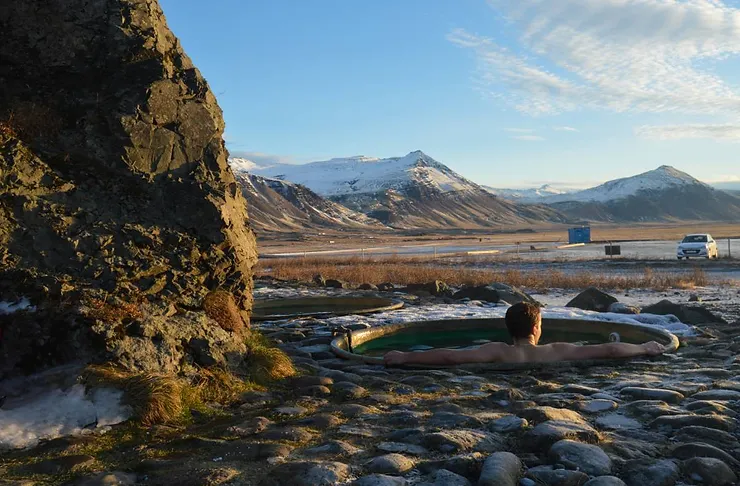
Iceland Weather and Temperatures in June
This is the first true summer month with good weather and warm temperatures. June is when you want to check the 4x4 and SUV rentals in Iceland to get your hands on a good set of wheels for a Highland trip on the F-roads.
The weather in Iceland in June is the second-best in terms of summer weather you can get. You will be greeted with the lowest amount of rain, high temperatures, and the largest number of tourists. This is the high-pressure season for a reason.
Iceland Weather in June in a nutshell:
-
Average high temperature: 12°C
-
Average low temperature: 8°C
-
Average rainfall: 52,5mm
-
Average sunlight: 21 hours
Iceland Weather and Temperatures in July
July marks the best summer month and the absolute best month for whale watching in Iceland. It’s in between the whale migratory seasons and overall very pleasant. The temperatures are up, and the weather is still somewhat calm across the island.
The weather in Iceland in July is perfect for a drive around the Ring Road 1 and diving into the ocean to swim between the Eurasian and North American tectonic plates. Touch two continents at once, without being on either one of them!
Iceland Weather in July in a nutshell:
-
Average high temperature: 14°C
-
Average low temperature: 9°C
-
Average rainfall: 67,5mm
-
Average sunlight: 19 hours
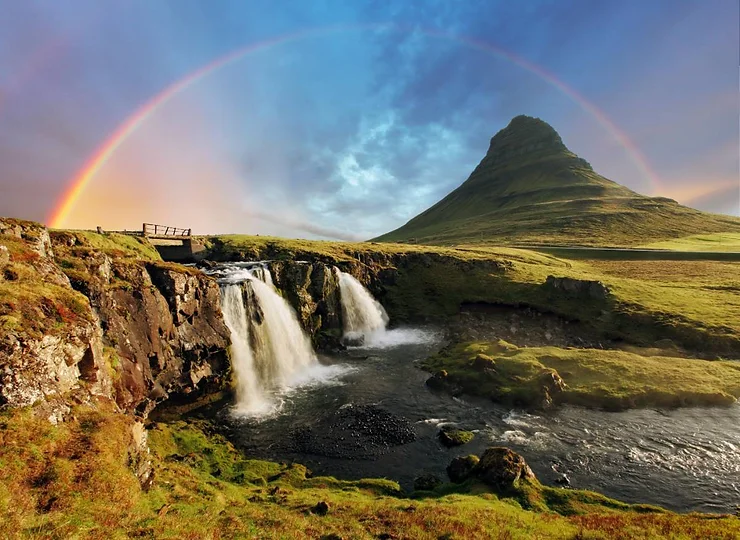
Iceland Weather and Temperatures in August
The last gasp of the summer can be felt in the weather in Iceland in August. Temperatures are still relatively high, but the weather is slowly starting to pick up and rain is becoming a more frequent element.
You will still have plenty of warm summer days left and this is a little off-season, so it’s perfect if you want to enjoy the many tourist attractions without the high pressure of other tourists. Just keep an eye on the weather forecast to avoid any wet surprises.
Iceland Weather in August in a nutshell:
-
Average high temperature: 13°C
-
Average low temperature: 8°C
-
Average rainfall: 87,5mm
-
Average sunlight: 16 hours
Iceland Weather and Temperatures in September
This is the official rainy-day month of the year. The weather in Iceland in September is littered with rainy days and is (unfortunately) not very suitable for outdoor activities. Iceland average temperature is declining, and the weather gets less inviting with each day.
However, that also makes this a month when you can visit Iceland without having to battle other tourists at the prime attractions and the best time of year to go on a museum tour around Iceland.
Iceland Weather in September in a nutshell:
-
Average high temperature: 10°C
-
Average low temperature: 6°C
-
Average rainfall: 115mm
-
Average sunlight: 13 hours
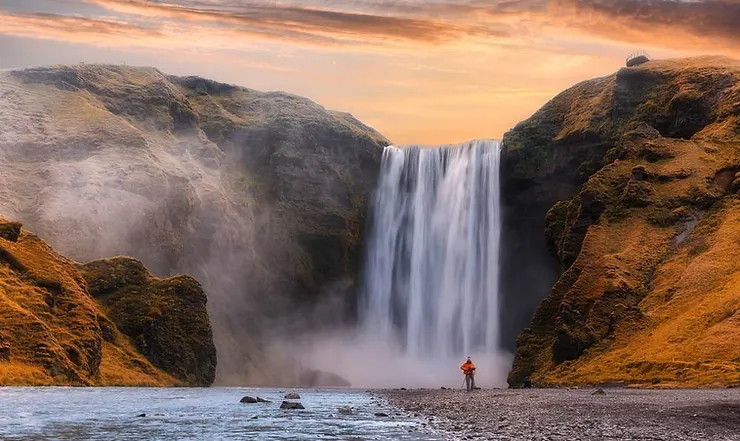
Iceland Weather and Temperatures in October
Just like March signals the end of winter, October signals the end of summer. The weather in Iceland in October is volatile, and even though the temperatures look survivable, the weather conditions will make it feel like it is way colder than it really is.
October is also the start of the northern lights season since the days are shorter and the cold is starting to creep in. Make sure to head your way north to get the best chances of spotting this beautiful display of light.
Iceland Weather in October in a nutshell:
-
Average high temperature: 7°C





